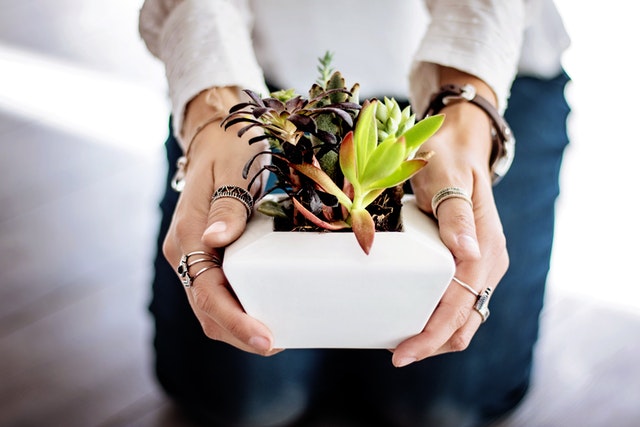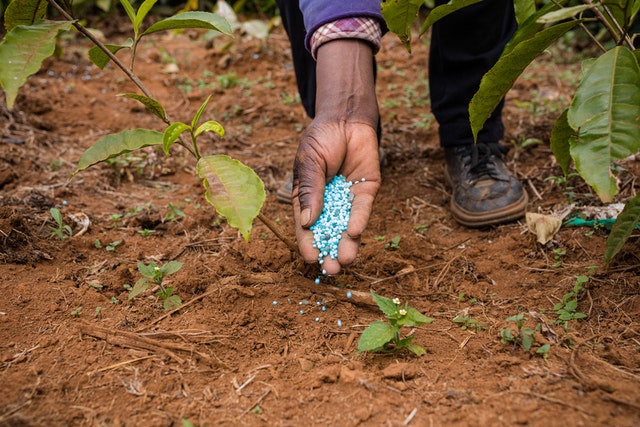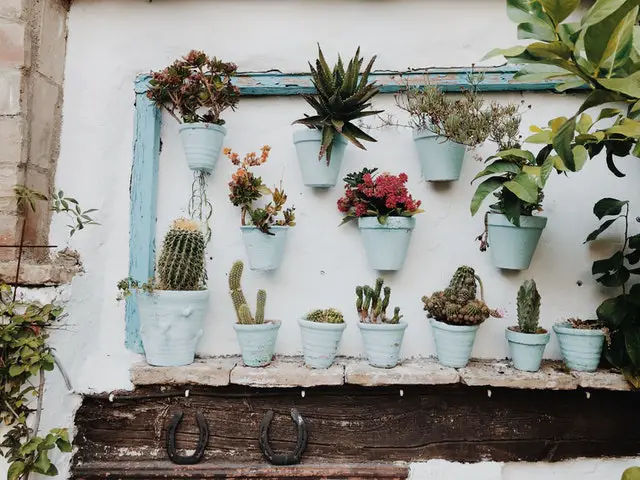Black spots on succulents are a common problem, though it is critical that you figure out the cause of your black spots as soon as possible so you can correct the problem without delay.
The main reasons for black spots on succulents are:
- Fungus or disease
- Pests
- Exposure to frost
- Sunburn
- Overwatering
- Over Fertilizing
Why does my Succulent Have Black Spots?

Black spots on succulent leaves have a number of causes, but in every case black spots are an indicator that your plant is not thriving in its current conditions. Definitely do not ignore black spots or patches on a succulent! The earlier you begin to correct the problem, the more likely your plant will survive.
1. Fungus or Disease
Succulents are not especially prone to fungus or disease, though if these desert plants are grown in very humid regions, they may have trouble fighting off disease on their own. Likewise, overwatered succulents will be more susceptible to disease.
If you are misting a succulent and it develops black spots, discontinue misting immediately.
Succulents may develop spots from powdery mildew, black mold, gray mold, water warts, anthracnose, or root rot.
If you can, remove any spotty leaves with a clean pair of scissors or shears. Make sure to disinfect your scissors after with rubbing alchohol.
You will need to treat any fungal infection on your plant. You can use a commercial fungicide to treat the spots, just make sure to follow the instructions carefully so you don’t damage your plant.
Many gardeners like to use baking soda and dish soap instead of a specialty fungicide. Dilute ½ teaspoon of both baking soda and dish soap (no bleach) in a gallon of water, and spray the leaves of your plant.
Make sure to keep your plant out of sunlight while treating with baking soda. You may want to try this treatment on a few leaves first, to make sure it won’t shock your plant.
You can also spray with a solution of neem oil and water.
Once you have treated your plant, it’s a good idea to repot it with fresh soil. Make sure you wash your pot thoroughly with hot, soapy water.
2. Pests
Pests can also cause black spots on succulents, and are treated in a similar way to fungus. Succulents may become infected with mealy bugs, aphids, ants, gnats, and spider mites. Many pests can be treated by spraying your plant with a solution of 70-75% isopropyl alcohol and water.
If you have a serious infestation, you may need to treat your plant several times.
Washing your plant thoroughly with water should remove many of the pests, though you will probably still need to treat it. You can use a neem oil solution to treat pests as well as fungus.
For both fungal and pest infections, make sure you keep your infected plant away from other plants. Clean any implements used to treat the infected plant so the problem doesn’t spread.
3. Frost
Succulents can survive in a range of temperatures, though very few varieties are frost-resistant. If you live in a cold climate, make sure you bring in your plants when the temperature reaches below 50-55℉.
If your plant has been exposed to frost, bring it indoors and keep it in bright light. Remove any damaged leaves and see if the healthy parts of the plant bounce back.
4. Sunburn

While many succulents can tolerate some sun (or even thrive in it) exposure to very intense sun can cause the leaves to develop black spots and turn yellow or washed out. This is especially true for succulents grown in pots.
If your plant develops sunburn, the spots won’t go away. You can cut away the sunburned leaves if there is healthy growth to spare. If all the leaves are sunburned, you will have to wait for new leaves to grow.
Succulents seem to tolerate morning sun quite well, so if possible move plants to a part of your garden where they may only receive limited morning sun. Intense sun during the middle of the day may be too much.
You may want to consider a sun shade to keep some of the brightest sun off your plants.
5. Overwatering
Overwatering weakens plants’ ability to heal themselves if they are exposed to pests, disease, or temperature fluctuations.
In addition, overwatering can lead to root rot, in which case your plants roots will appear mushy and brown. This damage may even spread upward into the leaves of the plant, which will cause the leaves to appear mushy and brown.
Make sure you only water your succulent when the soil is completely dry halfway from the top. In the summer months, this may be no more than every 3-4 weeks. In winter, you may only water your succulents every month or two.
If your plant has developed root rot, you will need to trim the dead roots and repot in fresh soil. Trim off anything that is black, brown, mushy, or smelly (don’t forget to wash your scissors after). Healthy roots will look white and supple.
If all of your roots are damaged, you will probably not be able to salvage the plant. If you can, take off a leaf or a healthy part of the stem and try to propagate a new plant.
Plant in succulent or cactus soil, in a pot with at least one drainage hole (more is better).
6. Over Fertilizing

Most succulent varieties thrive with minimal fertilizer applied in the spring and summer. Many grow with no fertilizer at all. Some varieties, however, are very sensitive to chemicals in the environment, and fertilizer may do more harm than good.
Dilute fertilizer to half strength, and only apply once per month at the most.
If you suspect your plant is being over-fertilized, or you are observing salt or chemical buildup on the soil, you will need to remedy the soil. If you can, plant in fresh succulent or cactus soil. Otherwise, flush all the buildup out of the soil by running water through it several times and letting it drain out.
See another post: Black Spots On Kale
Conclusion
If you notice black spots on succulents, don’t delay! Start getting to the cause of the problem before it gets out of control.
Frequently Asked Questions
What causes black spots on succulent leaves?
Black spots could be caused by fungus, pests, exposure to frost, sunburn, overwatering, or over-fertilizing. Make sure your plant is getting enough sunlight and you are not overwatering. Plants grown in healthy conditions have fewer issues with spotting.
Why does my succulent have spots?
Spots are caused when the healthy cells of a plant die. This can be caused by damage to the leaves or to the roots of the plant. Damage to the roots may be due to overwatering, poor drainage, or poor soil.
Damage to the leaves is caused by pests, disease, or extreme temperatures.
How do you treat black spots on succulents?
If black spots are due to fungus or pests, you will need to clean your plant with a solution of rubbing alcohol and water. Make sure to clean off all the bugs. This may take more than one application. Then repot your plant in fresh soil and a clean pot.
Make sure you let your soil dry out in-between watering.

Hey, I’m Lisa and I’ve been an avid gardener for over 30 years. I love writing, talking and living in the garden! Feel free to connect with me on my socials below

